#Jingwei
Text

uhh hello can we. can we see her again in maim plot. or. or maybe her cooler version. ngh i love her with my heart and soul please
271 notes
·
View notes
Text



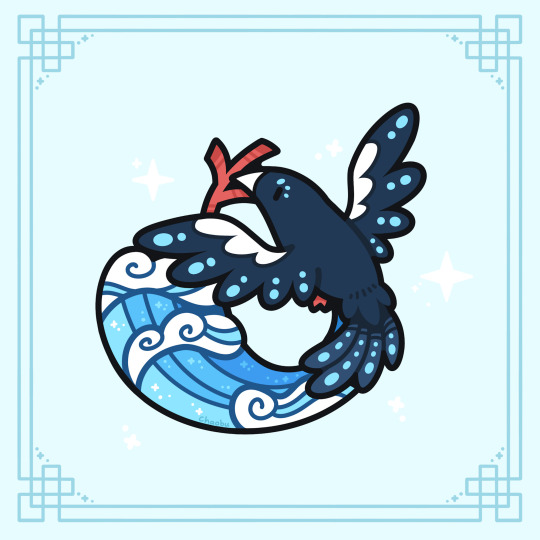

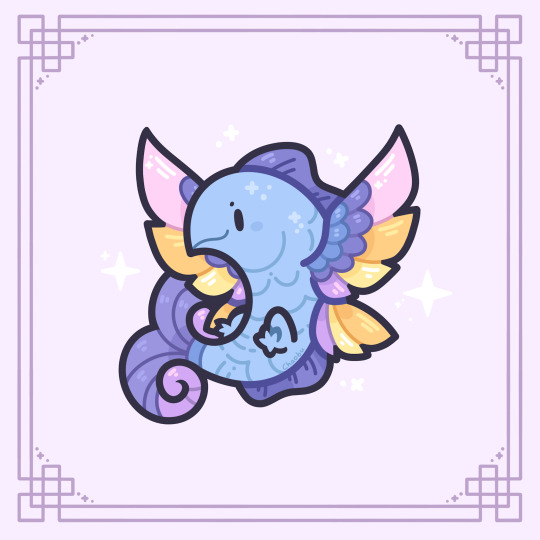
Creatures from Chinese mythology - Four Symbols addition (Lion Dance, Dijiang, Jingwei, Jian Birds, Peng) (3/3)
Lion Dance: One of the many myths associated with the Lion Dance is the tale of the Nian. In ancient times, a beast called the Nian would descend upon villages every year, devouring crops and people. The Lion Dance (along with firecrackers and the color red) was used to drive away the Nian, allowing the villagers to live in peace for another year.
Dijiang: Dijiang is a creature with no face and six legs. It lives in a state of perpetual confusion. Despite this, it is very fond of singing and dancing. Some sources describe it as a divine bird.
Jingwei: Jingwei was a girl that drowned at sea, and her spirit was reincarnated as a bird. She tirelessly throws sticks and stones into the sea to fill it up so that no one would have to suffer the same fate she did.
Jian Birds: The Jian is a mythical one-eyed, one-winged bird. In order to fly, a Jian needs to find a partner Jian. Paired Jian birds are known as Jianjian.
Peng: Peng, sometimes called Dapeng,are birds with wingspans thousands of miles wide. They can take the form of an equally enormous fish known as Kun.
462 notes
·
View notes
Text
ok fine u know what tumblr needs to see these. get exposed to my mental illness
ALIGNMENT CHARTS TAKEN FROM HERE PLEASE REBLOG AND SPREAD SOME LOVE <3

characters are doubled mostly because it usually means multiple scenarios can happen at different times (or simultaneously)

the transparent doubles are basically like "also feels/does this at the same time usually"
anyway there u go :3 and yes im treating the HuasTM as separate entities for the sake of my separate polycule brainrot just because it's funny
anyway. awaiting tumblr peer review :3
#fu hua#pardofelis#herrscher of sentience#honkai#honkai impact#hi3#honkai impact 3rd#phoenix#jingwei#azure empyrea#shadow knight#yeah im doin ALL da tags baby they are technically correct !#alignment chart#alignment meme
67 notes
·
View notes
Text

Art celebrating Fei Ren Zai's 1000th comic!
source: FRZ Weibo
#jingwei#haiyan#xingtian#sun wukong#mi le#ziwei#wenchang#mazu#guanyin#yang jian#xiaotian#maori xingjun#bai ze#red boy#long nü#caishen#ao lie#jiu yue#nezha#xiao yu#shiyi yue#fei ren zai#非人哉#manhua#九月#敖烈#哪吒#精卫#海燕#刑天
31 notes
·
View notes
Text




Target: Sighted
20 notes
·
View notes
Text

🪶Phoenix and her Shadow🪶
71 notes
·
View notes
Text
Silly little antonmy practice that I kinda failed at
Ft. @doodlezpoststuff oc

These two are winged girlies who talk about any drama they can find
Now, I shall go and try and draw on my new drawing tablet
#lmk oc#pls ask questions#drawing#drawing oc#lmk oc art#art improvement#artists on tumblr#drawing on paper#sketch#my ocs#jingwei
20 notes
·
View notes
Text

Just realised I haven't posted this! Jingwei stigmata redesign I did a while ago < 3
14 notes
·
View notes
Note
If you google if Nuwa is the daughter of the Jade Emperor, you usually get articles that will say that.

Ah, it's on wiki. But as much as it says it there I think that this might actually be confusing this Nvwa with another Nvwa. Thanks to @digitalagepulao who showed my that there is another Emporer who DOES have a daughter named Nvwa but they are different people.

Jingwei or previously known as Nvwa, was turned into a bird that is continuously trying to fill up the Eastern sea. She is a daughter of the Flame Emporer and is a slightly popular myth so perhaps this was just a mistake on names cause I asked around a few FSYY fans and neither they nor I can find a passage in FSYY that says Nvwa (the snake goddess) was related to JE.
12 notes
·
View notes
Text

A determined bird, with a seemingly impossible self-imposed task of vengeance on the very sea itself.
Jingwei, the girl who drowned and returned as a bird. She works ceaselessly on a goal that could very well take eternity.
#BriefBestiary#bestiary#digital art#fantasy#folklore#legend#myth#mythology#jingwei#jing wei#chinese folklore#jingwei filling the sea#spirit of determination#mythical bird#nüwa#yan di#vengeance
19 notes
·
View notes
Photo

Figure 1. Jiang Qingji’s fan calligraphy, UWM Special Collections (cs 000092).
Graduate Research: Chinese Scroll and Fan Work,
Part 11
Today we continue our exploration of calligraphic scripts in Chinese fan work, with further examples of Zheng vs. Qi approaches.
Figure 1 is a fan text written in a cursive script. According to Tai Jingnong (1902-1990), a scholar in Chinese poetry, calligraphy, and painting, cursive scrip first appear in the Han Ju Yan Wooden Slips, which were created from the Han (206 BCE-220 CE) to Jin Dynasty (265-420 CE).The cursive script from this period, such as that found in Monthly and Seasonal Records of Military Supplies from the Kuang-ti South Platoon in the Yung-yüan Era , originated from the hurried writing of the older clerical script (see my last blog).
In this fan, Jiang Qingji (1820-1880) copied a section of A Narrative on Calligraphy by Sun Guoting (646–691, see my blog on Zhang Jian), a very important treatise summarizing the esthetic values of Chinese calligraphy. However, the copying of the text is as far as the similarity goes. For Jiang 敏 in Figure 2 (a), the undulation of the brush breaks the stroke for a staccato thickening-and-thinning effect, whereas Sun’s counterpart in Figure 3 (a) is much more smooth and legato --- a typical characteristic of cursive script canonized by the calligraphic sage Wang Xizhi (303-361 CE, Figure 3 (b)). The variance, angularity, and exaggeration imbue Jiang’s brush with a strong sense of design.

(From left to right):
Figure 2 (a) : Detail from Figure 1
Figure 2 (b): Analysis of the Last Stroke in Figure 2 (a), made by Jingwei Zeng
Figure 2 (c): Detail from The Stele of Xuanmi Pagoda

(From left to right):
Figure 3 (a): Detail from Sun Guoting’s The Manual on Calligraphy
Figure 3 (b): Detail from Wang Xizhi’s On the Seventeenth Day
Figure 3 (c): Detail from Lu Ji’s Recovering from Illness
Figure 3 (d): Detail from Liu Sha Zhui Jian
Jiang’s design is much more apparent in 敏’s last brush (Figure 2 (a)). The brush tip goes rightward first, creates an angle, then makes a circle before it goes back to form a sculptural stroke (see Figure 2 (b)). The bulging monumentality of this stroke is analogous to its counterpart in Figure 2 (c) from the standard writing The Stele of Xuanmi Pagoda --- another calligraphic masterpiece in Chinese history inscribed by Liu Gongquan (778-865) in 841. According to Wang Shizhen (1526-1590), a famous writer and historian in the Ming Dynasty (1368 - 1644), this stele is the most telling example of Liu’s penchant for rippling tendon and bone in his creations. In our fan, Jiang complicated his brush movement by introducing a contrived sculptural design from Liu’s standard writing. Since standard writing can also be called “Zheng” writing in Chinese (see my previous post), contrived design can be seen as the embodiment of Zheng style, a conservative form, relying on established styles and techniques.
The monumentality of Liu’s Zheng style is derived from the Four Masters of Tang (Ouyang Xun, 557-641, Yu Shinan,558-638, Chu Suiliang, 596-658, and Xue Ji, 649-713), whose works are utilized to glorify the peace and prosperity of the dynasty. In Tai Jingnong’s opinion, a calligraphic untrammeled naturalness (Yi, 逸, which is the correlative of Qi, a style of originality, challenging recognized norms) is compromised by this propagandistic self-aggrandizement.
As a matter of fact, the last stroke in Sun’s original work (Figure 3 (a)) exhibits some untrammeled naturalness, as the end of last stroke does not have an obvious sense of design. A much more untrammeled and natural style can be seen in the similar strokes in Wang Xizhi’s On the Seventeenth Day (fourth century, Figure 3 (b)), Lu Ji (261-303)’s Recovering from Illness (ca.303, Figure 3 (c)) and Liu Sha Zhui Jian (ca. 98BC, Figure 3 (d)) --- they are guided by concepts of Yi & Qi.
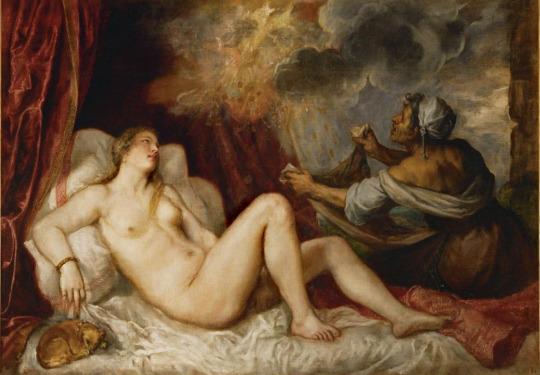
Figure 4. Titian’s Danaë
The contrast between premeditated design (Zheng) and the untrammeled naturalness (Yi & Qi) can be seen in the Western art, too. In Titian’s famous work Danaë (figure 4), the body of the woman to the left is derived from Michelangelo's female figure in the sculpture at the Medici Chapel entitled Night, possessing a great designing effect and sculpturality (similar to Jiang and Liu’s Zheng style); on the contrary, the white satin under her body is sketched by the bold slash of the brush (similar to Wang, Lu, and Liu Sha Zhui Jian’s Yi & Qi style), suggesting an unbridled idiosyncrasy, thereby foretelling the arrival of Baroque art.

(From left to right):
Figure 5 (a): Fu Shan’s imitation of Wang Xizhi’s Letter Written in the First Lunar Month
Figure 5 (b): Liu Sha Zhui Jian

(From left to right):
Figure 6 (a): from Figure 5 (a)
Figure 6 (b): from Figure 5 (b)
Figure 6 (c): from Figure 5 (a)
Figure 6 (d): from Figure 5 (b)
Figure 6 (e): from Figure 5 (a)
Figure 6 (f): from Figure 5 (b)
Fu Shan (1607-1684), who was the master for Qi’s style, considered premeditated Zheng’s design as a bete noire and he preferred untrammeled naturalness in his art. In Figure 5 (a), though it is Fu’s imitation of Wang Xizhi’s work, it bares greater resemblance to the wooden slip Liu Sha Zhui Jian in Figure 5 (b). Fu and Liu Sha Zhui Jian employed an unmodulated linearity (Figure 6 (a) and (b)), an untrammeled leisure (the “丿” in Figure 6 (c) and (d)), and an unembellished naturalness (the last horizontal line in Figure 6 (e) and (f)). Both of them epitomized Qi & Yi concepts.
It is worthwhile mentioning that Fu never had the chance to see Liu Sha Zhui Jian, which was excavated in 1906-1907 (see my previous Zheng Xiaoxu’s post), around three hundred years after Fu’s time. The striking similarity between Fu’s work and Liu Sha Zhui Jian testifies Fu’s inimitable capacity to imagine the broken part of the art history by tracing the path of calligraphic evolution.
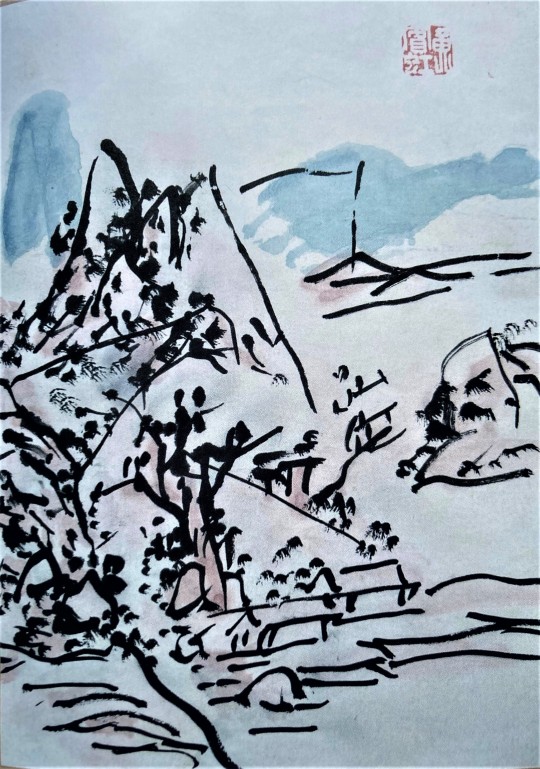
Figure 7: Huang Binhong’s Landscape Painting
Fu’s Qi legacy is carried on by Huang Binhong (1865-1955), an extraordinary Chinese modern landscape painter whose brushwork is characterized by raw, unmodulated, and untrammeled naturalness. The brushwork of Huang’s painting in Figure 7 bears a strong correlation to Fu’s brush in Figure 5 (a) and the satin of Danaë in Figure (4)---they are ad-libbed in the spur of the moment, implying an ephemeral yet highly-spiritualized transcendentalism.
According to The Petty Sayings of Painting, a famous thesis on Chinese painting esthetics, Chinese landscape painting is similar to the writing of cursive and running script --- the creation should not be restrained by rigor and workmanship (i.e., premeditated design, or Zheng). Dong Yuan’s (c. 934-962) interplay of voids and solids (see Figure 8, Dong’s The Rivers of Xiao and Xiang), Mi Fu’s (1051-1107) smoky mountains improvised by horizontal dots, Mi’s son Mi Youren’s (1074-1153, or 1086-1165) The Ink Play of Cloudy Mountains (see Figure 9), and Huang Gongwang’s (1269-1354) withered trees and lean mountains (see Figure 10, Huang’s Nine Submits after the Snow) exhibit a feeling of untrammeled naturalness. On the contrary, “only the vulgar artisans will deliberately create the meticulous paintings in order to please the audiences’ eyes.” The paintings made by this pleasing servitude is “drab and dour.”

Figure 8. Dong Yuan’sThe Rivers of Xiao and Xiang

Figure 9. Mi Youren’s The Ink Play of Cloudy Mountains

Figure 10. Huang Gongwang’s Nine Submits after the Snow
Yi & Qi also happens under Cezanne’s (1839-1906) hands. In Montagne Sainte-Victoire (Figure 11), Cezanne did not choose a refined brush to design remote mountains; instead, he created a simple calligraphic line as his abstract rendition of the landscape. For all these artists, mastering a skill of unpremeditated and sophisticated disegno (Zheng) is not difficult (and indeed, they did so when they were young); what challenged them most was how to get rid of formulaic design and create a free, simple, and impromptu Yi & Qi effect. By doing this, they presented their own characters rather than representing the rules and regulations of traditional and formulaic style.

Figure 11. Cezanne’s Montagne Sainte-Victoire
View more posts from the Zhou Cezong Collection of Chinese scroll and fan work.
– Jingwei Zeng, Special Collections graduate researcher.
#graduate research#Jingwei#Chinese calligraphy#Chinese fans#Chinese art#Chinese paintings#Chinese history#art history#calligraphy#calligraphers#Zheng style#Qi style#Jiang Qingji#Sun Guoting#Liu Gongquan#Wang Xizhi#Lu Ji#Liu Sha Zhui Jian#Fu Shan#Titian#Michelangelo#Huang Binhong#Dong Yuan#Mi Fu#Mi Youren#Huang Gongwang#Paul Cezanne#Zhou Cezong Collection#Tse-Tsung Chow Collection
36 notes
·
View notes
Text

“Yes, the girl has colored my world and given me a new life.”
Happy 1st Anniversary tot!!
It has been a crazy and wild year for sure.
#I LOVE THEM SO MUCH SOBS#Happy Anniversary nonetheless!#art#fanart#nadas stuff idk#tears of themis#tears of themis fanart#tot#tot fanart#tears of themis rosa#mc tears of themis#Tot mc fanart#Qiangwei#Marius von Hagen#Marius von Hagen fanart#Tears of themis Marius#Lu Jinghe#marirosa#Mariusrosa#Jingwei#Butterflies#Flowers
4 notes
·
View notes
Text
The Pain Eater
The Pain Eater is a cryptid that lives in the mountains above the Sea of Sadness. It feeds on pain and suffering, and has become a much loved symbol of the surrounding area. As the sea rise caused by Jingwei has driven humans into the surrounding mountains, sightings have become more common, but people who have seen it routinely refuse to describe its appearance out of a sense of respect.
The Pain Eater wanders around more or less randomly, but because of its important role in human culture, many rituals have been created to try to summon it whenever someone is in pain. Over time these rituals have developed and evolved, and whenever the Pain Eater appears, people ascribe its arrival to whichever ritual they had most recently performed.
Many villages of the area hold Pain Eater festivals. These are generally on a different date for each village, since as far as anyone knows, there is only one Pain Eater. It does seem to be aware of these festivals, as it does appear fairly consistently, knowing that at certain times in certain places, it will find an abundance of food.
Pain Eater festivals are as diverse as they are numerous. Some involve ritual infliction of pain in order to provide a feast for the Pain Eater, but in most areas this is seen as unnecessary.
Some people consider some of their pain too meaningful to feed to the Pain Eater, so a common part of the festival is the sharing of pain, where people tell each other the stories that give their pain meaning, and decide which pain to give up and which pain to hold onto. It was at one of these gatherings that Beatrice told the story of the Six Thousand Lives of Antissa.
0 notes
Text
come grab your freshly off the grill cooked ship!
This time featuring the 'arts and crafts project' because Felis is glue here, otherwise the rest would fall apart.
FOR THE RECORD this is if all three Hua's here were individual entities separate from each other
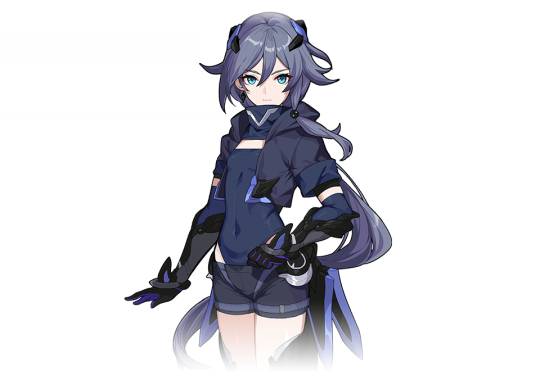



I'll put my unhinged mentally unwell takes down below for your enjoyment <3
ill try to. help make sense of their personalities and thoughts on the others.
Felis: basically her usual self, though maybe a bit toned down with her antics (I say toned down as if I ever elaborated on what she's like lol)
treasures Hua the most, best friends and partners, tries to get Hua to be less stiff and enjoy life but also is scared to lose her
admires Phoenix and gets along with her really well
thinks AE is kinda scary because she's a celestial but there's something alluring about such a powerful entity being so mysterious and 'cold' (girl cant help getting a crush tho)
Hua: soldier, shy, unsure of herself, basically her moths era (NOT her Elysian Realm SIM!)
got attached to Felis because she is a source of comfort and feels like 'home', likes having someone to come to after her missions
Phoenix's happy and relaxed attitude is calming in contrast to her life but her and Felis can get a bit overwhelming when together, she appreciates her though even if they're not that close
AE is very scary and she tries to keep away from her, feels like AE doesn't approve of her for whatever reason and glares at her sometimes (it's just the AE resting bitchface she gives to everyone by accident but holds no malice)
Phoenix / Jingwei: deity, thinks humans r funny, clever and wondrous and loves them dearly
Felis's happy attitude resonates with her and she may have gotten a little crush on her because of that as well, but she can keep herself in check if her feelings aren't reciprocated
thinks Hua is a cute little birdie that she wants to protect bc shes so precious
longtime friends with Azure Empyrea and they have a weird but mutual friendship (and maybe more...? unspoken feelings towards each other that they never address but are both sort of 'Aware Of' since Phoenix is the one who calms down AE if she's being unreasonable OR the first person AE goes to if she's feeling down / feels negative emotions)
Azure Empyrea: cold, calculating, has an eerie calm attitude but can be scary if she gets angry, stern and firm in her ways but can be persuaded (see: Phoenix) to compromise. means well but doesn't know how to show it
finds Felis intriguing because of her nature, also catches her sometimes glancing at her or following her around, can't sense any malice from her so aside from being a little annoyance at first, she warmed up to her presence (and she keeps Phoenix happy whenever she can't partake in whatever silly human thing she wants to play / do)
sees Jingwei as an equal, cares more about her than she lets on but doesn't want to tie her down to someone like her, still appreciates the fact that Phoenix spends time with her and tries to be the bridge between her and humans
her feelings towards Hua are complicated and she usually keeps her distance because she can sense the fear coming off her. however Hua reminds her of her past self(?start of her journey as a celestial deity), unsure and without a place in the world and she feels the need to be there or give advice (if ever asked), doesn't hold any hostility towards her but something about her own expression (? too dumb to figure out) scares Hua and she doesn't understand why
I have a so many more snippets to share...if you will ;3
#hi3#honkai impact#honkai#fu hua#pardofelis#azure empyrea#phoenix#jingwei#HOW MANY MORE NAMES DO THESE HAVE BETWEEN THEM!#also felis is the glue because could you REALLY see these 3 get into a willing polycule?#maybe phoenix could work it out but shes too out of touch thursday for that#i dont even know what to call this ship#well#looks good enough xD#pardohua#i am eagerly awaiting for peer review
67 notes
·
View notes
Text



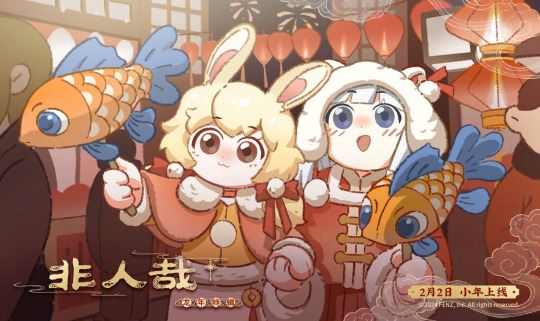
Art for CNY 2024
source: 1 2 3 4
#fei ren zai#非人哉#guanyin#shiyi yue#yang jian#xingtian#xiaotian#ao lie#jingwei#xiao yu#jiu yue#nezha#manhua#donghua#official art#holiday artworks#from the mod:新年快乐<3 wishing everyone a happy new year!! for me its good food time#观音#十一月#杨戬#刑天#哮天#敖烈#精卫#小玉#九月#哪吒#chinese new year#lunar new year
18 notes
·
View notes
Text
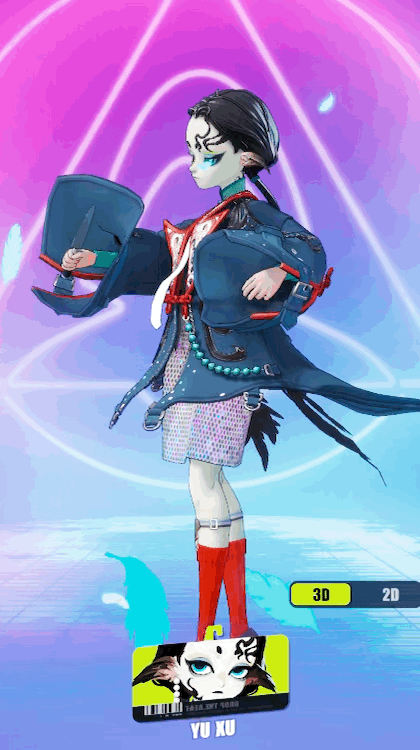



A Murder Weapon? How did that end up here…?
18 notes
·
View notes